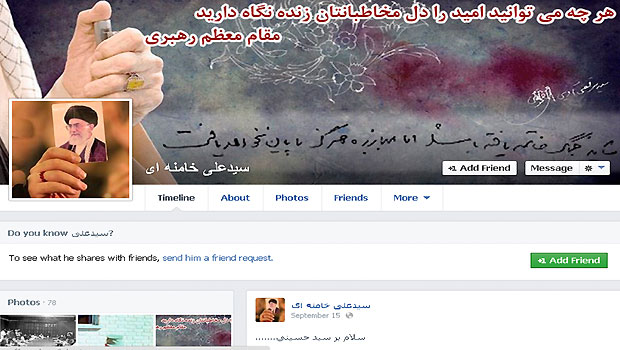“Hello world, we’re tweeting from Iran without being blocked!”
Just when they were about to celebrate the unblocking of social networking websites Facebook and Twitter, following a four year ban, the Iranians were destined to be disappointed.
Digital freedom soon came to an end and Iran blocked the services once again.
Iran regained its repressive status on the list of countries who consider the internet their enemy.
But what happened during the few hours of “freedom” when Iranians celebrated a “victory,” which they attributed to their new President Hassan Rouhani? After all, it was his presidential campaign that promised to end internet restrictions in Iran.
Was the sudden unblocking of websites the result of a technical glitch as the official announcement claimed? Or was it a deliberate experiment carried out by the regime to check the public’s reaction and to check what the Iranians will say if they restore their digital freedoms? Or was it an indication of Rouhani’s failure to ease internet restrictions?
At the moment, there is a new president in Iran attempting to present his character as one more open than that of his predecessor. He has repeatedly expressed his desire to ease internet restrictions. This is further reflected by the activity of the Iranian foreign minister Mohamad Javad Zarif, who is a keen user of Twitter and Facebook. The reality is that the Iranian regime utilizes the social networking websites that it bans its own people from.
Supreme Guide Ayatollah Ali Khameini publicizes his stances, fatwas (religious edicts) and praises from his supporters through these social networking websites. The new regime figureheads are similarly displaying bold activity in this field.
In general, Iranians are active on the internet and they have found means to access the virtual world despite the fact that some websites are blocked.
The regime knows that millions of Iranians manage to find a way around internet restrictions and use prohibited websites. However, from time to time, it tests the permitted dosage of freedoms; this is what happened last week.
It seems that the regime’s move to unblock the social networking websites for hours aimed to test its ability to control these websites and to test the Iranian people’s response towards this move.
It also seems that this is a game mastered by the regime which has presented Iran’s public with what officials call “halal” internet.
Iranians have displayed the ability to exploit the modern communication network. The regime is responding to these displays with “tests.”
The regime’s cyber experts currently reside in Damascus to aid the Syrian regime in its battle against its own people. In time, these experts will return, with lessons to teach Tehran.
It’s a race between the regime’s capability to resume suppressing its people and the Iranians’ capability to create a new Arab Spring similar to the one they aspired to launch in 2009. As we wait for this moment, Supreme Guide Ayatollah Khameinei will continue to tweet to the world and enjoy receiving his supporters’ compliments.
